
views
Getting a Mole Safely Removed

Make an appointment with a dermatologist. Going about mole removal the safe way is a decision you won't regret. It's extremely important to have your mole examined by a professional rather than trying to remove it yourself, even if you just want it removed for cosmetic reasons. When you see a physician, he or she will be able to tell whether the mole is potentially cancerous. If it is, professional removal is the only safe method, since other methods won't adequately deal with the cancer cells. If you don't have a dermatologist, ask your primary care physician to refer you to one. If you don't have health insurance, see if there's a health clinic in your area that provides mole removal services or referrals. Keep in mind that some doctors have the ability to remove moles in their office.

Determine whether a biopsy is needed. At your appointment, the doctor will examine your mole's shape, borders, size, color, and surface texture, to see whether it appears to be cancerous. If the mole exhibits common symptoms of melanoma or another type of skin cancer, the doctor will order a biopsy to test whether cancer cells are present. If it doesn't, the doctor will be able to go ahead and remove the mole. The sample will often be sent for analysis even if the mole does not appear to be cancerous. To perform a biopsy, a sample from the mole will be taken using either a shave or punch biopsy. This sample will then be sent to a lab and tested. If it comes back positive, further treatment will be needed. If it's negative, you can choose to keep the mole or have it removed.

See if shaving is an option. Surgical shaving is a procedure in which the mole is shaved off the surface of the skin. Local anesthesia is administered near the mole, so you won't feel pain during the process (aside from a needle prick). No stitches are required to heal a surgical shave. The process may leave a small scar behind. In some cases the area is also cauterized using a tool that burns away layers of skin to reduce the chances that the mole will grow back. This option may be available for moles that are noncancerous and relatively small. Moles that cover a larger surface area are too big to be shaved off and cauterized.

Have a surgical excision if necessary. If the mole is cancerous, or if it's large and covers a big surface area, it will probably need to be removed using surgical excision. After administering local anesthesia, the dermatologist will make a deeper cut to remove the mole and surrounding tissues, preventing it from growing back. The wound is then closed using sutures designed to leave minimal scarring. While it may sound like a big deal, surgical excision is actually a quick, out-patient medical procedure. Removing the mole will likely take between 20 to 30 minutes, depending on the size of the mole. Since only local anesthesia is administered, you'll be fine to drive home and go about your day as normal. Be sure to care for the wound as directed. You may have to return to the doctor's office to get the sutures removed. Keep in mind that the incision for this procedure is very small. If there is hair growth, then the doctor will cut out the root of the hair.
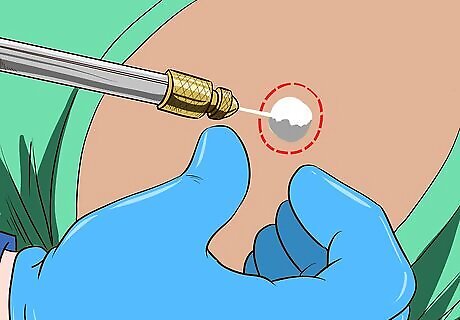
Look into cryotherapy. Cryotherapy is a common treatment for moles as well. This procedure freezes off the mole using liquid nitrogen on a cotton applicator. It is a common treatment with few adverse effects that are usually short-lived. Your primary care doctor or a dermatologist can perform cryotherapy as an in-office procedure. Some offices even have nurses who are trained to perform cryotherapy. Keep in mind that with cryotherapy, there will be no tissue to send to the lab for testing because it will have been frozen off.

Consider laser mole removal. Some doctors and dermatologists also perform laser mole removal, which is the process of removing a mole with a laser. Ask your doctor or dermatologist if this might be a good option for your situation.
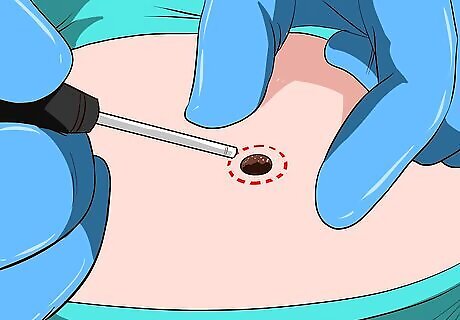
Ask about electrosurgery. Another option that you might discuss with your doctor is electrosurgery. This type of mole removal can help to control any bleeding that may occur, which may reduce the risk of complications, promote rapid healing, and result in minimal scarring.
Knowing What to Avoid
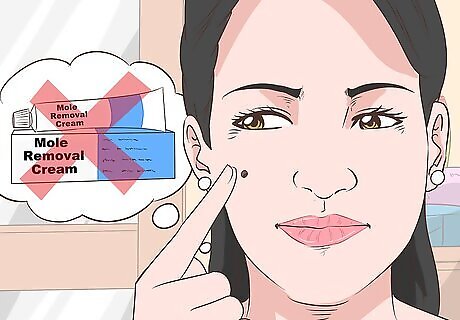
Avoid using mole removal creams. These creams are often sold online, marketed as a cheap, noninvasive alternative to surgical removal. In fact, mole removal creams can end up leaving deep pockets in your skin, since they go beyond the mole and dig into the skin underneath, causing irreparable damage. The small scar left behind by surgical removal is minimal in comparison. In addition, mole removal creams don't address the issue of whether or not the mole is cancerous. Applying it to a cancerous mole can be very dangerous; cancerous cells could remain and end up growing out of control without your knowledge. Don't use any type of cream or other product without consulting a doctor first.

Don't ignore a mole that's changing. If you don't like the prospect of having surgery, you might be tempted to let your mole be and forget about it. That's usually fine, unless you notice that the mole has changed over time. A changing mole can be a sign of the presence of cancer cells, so you should have any mole checked out by your doctor. Use the ABCDE guide to examine your mole. If you notice the following, be sure to make an appointment with a doctor: A is for asymmetrical shape. If your mole has two very different looking halves, this could be a sign of cancer. B is for border; look for moles with irregular, rather than smooth, borders. C is for color. Moles that have changed in color, have more than one color, or have color gradations should be checked out. D is for diameter. If your mole is larger than ⁄4 inch (0.6 cm) and still growing, have it checked. E is for evolving. Look for any changes to your mole that occur over weeks or months.
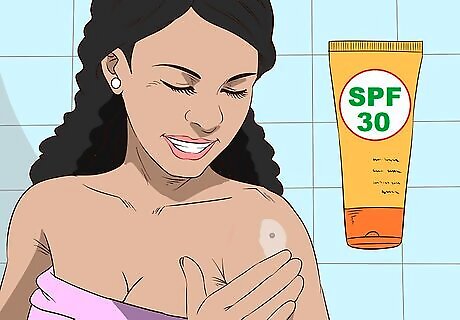
Protect your skin from UV rays to prevent new moles from forming. Exposure to the sun's rays can cause new moles to form. It also makes older moles more susceptible to changing and developing cancer. Be sure to protect yourself from UV rays so you don't develop new moles, and your existing ones stay healthy. Use sunscreen with SPF 30 or higher, even in the winter. Your sunscreen should also offer broad spectrum protection against UVA and UVB rays, and it should be water resistant. Try to keep your moles covered with clothing or a hat. Avoid using a tanning bed.
Trying Unverified Home Remedies
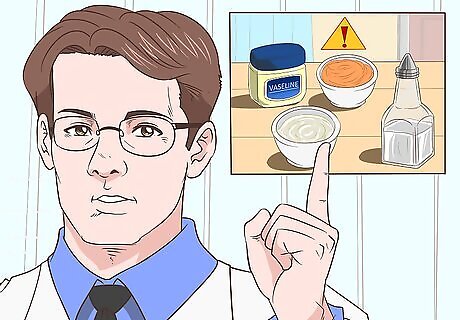
Be aware that home remedies are not supported by medical evidence. Most home remedies are based on anecdotal evidence, meaning that some people have tried these remedies and reported that they had success. However, treating a mole at home can be unsafe and high risk. The mole may be cancerous and this requires medical treatment. Make sure to talk with your doctor about your moles before trying any home remedies.
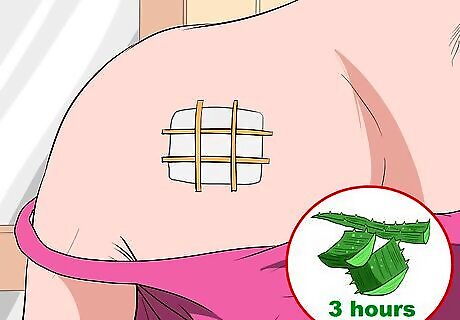
Apply aloe vera. Aloe vera is often used as a remedy for skin conditions, such as cold sores, psoriasis, burns, and frostbite. You can try applying aloe vera to your mole daily to see if this helps to get rid of it. Apply aloe vera to your mole, cover it with a clean cotton bandage, and let it sit for three hours. Repeat this daily for about three weeks to get rid of the mole.
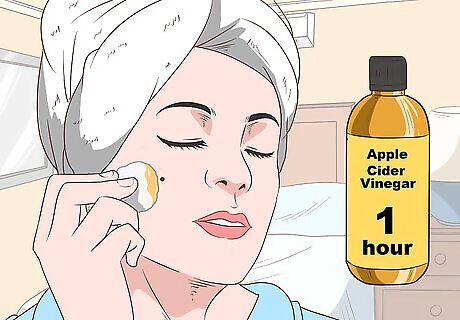
Try apple cider vinegar. While there are no science-based studies confirming that this method works, some have found that applying apple cider vinegar reduces the appearance of moles. To use this method, Put a few drops of apple cider vinegar on a cotton ball. Put the cotton ball on the mole and wrap a bandage around it. Leave the bandage on for an hour. Do this every day until the mole disappears. Stop if skin irritation occurs.
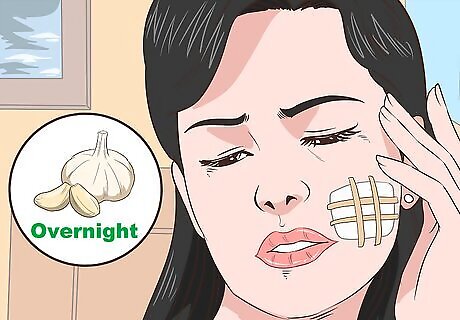
Use garlic. Garlic has many medicinal properties, and some say it helps with mole removal. To give this method a try, you need fresh garlic, not dried. Here's what to do: Take a clove of garlic and slice it in half. Put the half piece of garlic on the mole and leave it overnight wrapped in a bandage. Repeat for several days. Stop if skin irritation occurs.
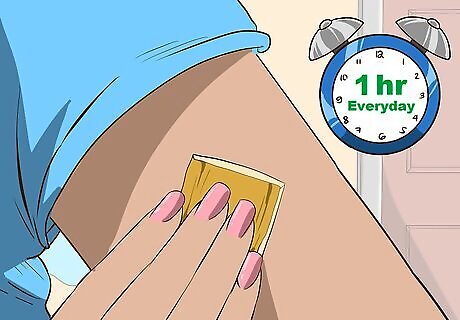
Use banana peels. Some say applying a banana peel to a mole will help remove it. At the very least, it will moisturize your skin. Pull the peel off a banana. Apply it to the mole for an hour. Repeat every day until the mole is gone. Stop if skin irritation occurs.

Try baking soda and castor oil. Take a pinch of baking soda and moisten it with a couple of drops of castor oil. Dab this paste onto the mole. Leave it on overnight. After a few days, check to see if the mole is still there. Stop if skin irritation occurs.

Use tea tree oil. Tea tree oil may be helpful for certain skin conditions, such as acne, fungal infections, and bug bites, so you can try it on your mole if you like. Brush tea tree oil on the mole twice daily using a q-tip. At night, you can also soak a cotton ball in tea tree oil and secure it over the mole with a Band-Aid. Repeat this method for a month, or however long it takes the mole to go away. However, keep in mind that applying tea tree oil to your skin daily may cause it to burn. Stop if skin irritation occurs.

















Comments
0 comment